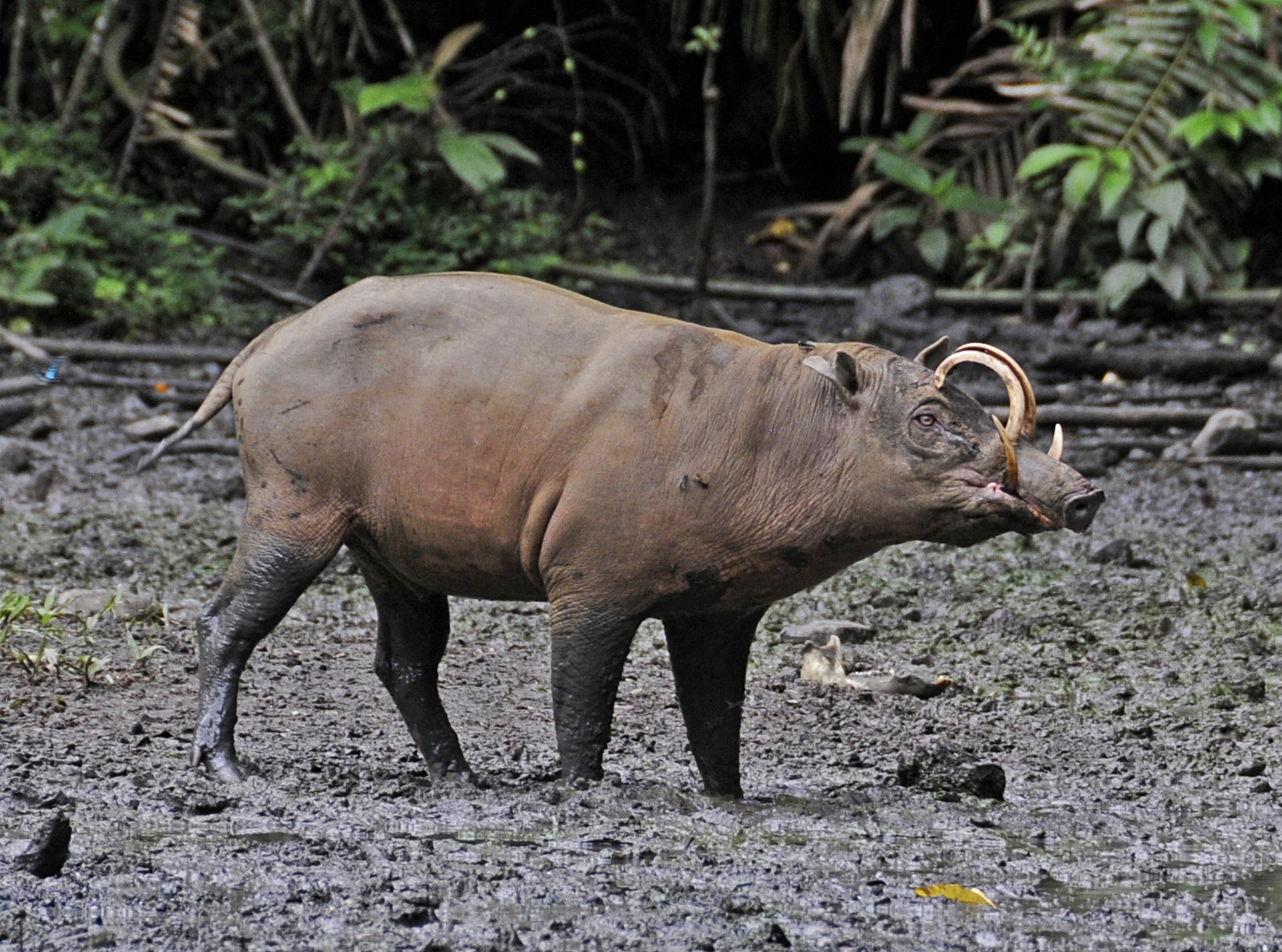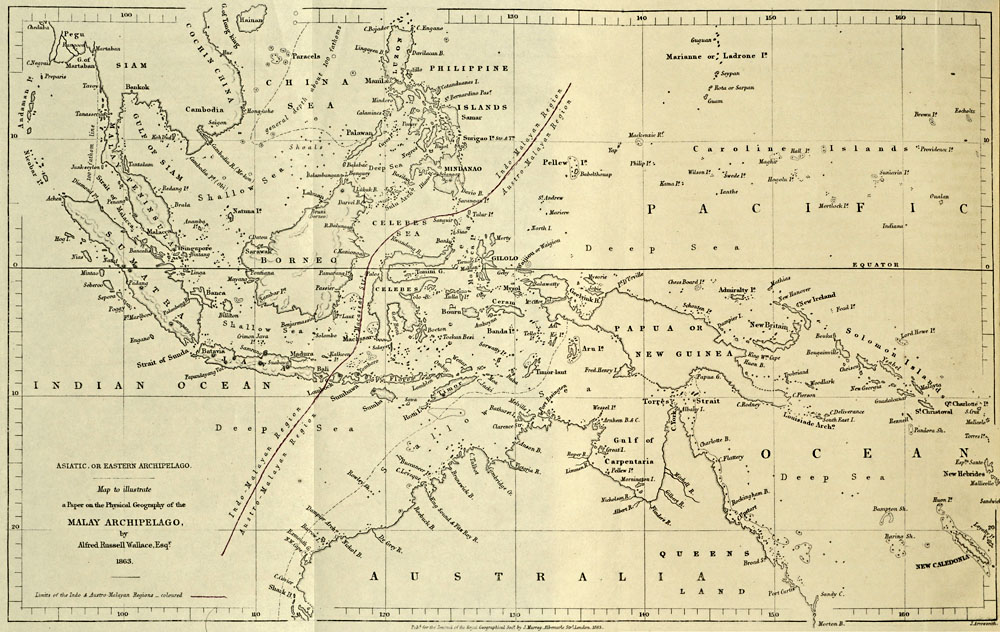By George Beccaloni, August 2019
Sulawesi is the world's eleventh-largest island, with an area of 174,600 km2 (67,413 sq. mi). The great 19th Century naturalist Alfred Russel Wallace described it as "the most remarkable and interesting [island] in the whole region, or perhaps on the globe". He said this for least three reasons. One, because a high proportion of its animals are found nowhere else. For example, 97 of its 230 resident bird species are endemic (restricted to Sulawesi). Two, it has some very distinctive species which are very different from their relatives in other regions, e.g. the curious Babirusa pig, with its upward pointing curled tusks, the tailless Chimp-like Crested Black Macaque, and the peculiar Maleo bird, which buries its eggs in sand like turtles do. The last reason is that it is the furthest west that marsupials are found from their stronghold in Australia and the only place in Asia where they live alongside monkeys. There are two species on Sulawesi, the Bear and Dwarf cuscus, which live in trees and feed mainly on leaves.

Male Babirusa (left) at Nantu Reserve, Sulawesi (Copyright G. Beccaloni) and Maleo (right).
Sulawesi's animals originated from ancestors which got there by flying, swimming or drifting on floating vegetation from surrounding regions. Unlike the islands to its west, which are surrounded by shallow seas and formed part of mainland Asia when sea levels were lower, a deep trench to the west of Sulawesi means it was never connected to Asia. This trench marks the position of the Wallace Line, an invisible boundary between the animals of Asia and Australasia which Wallace discovered during his eight year expedition to the region in the mid-19th century.

The Wallace Line (in red). Sulawesi is labelled with its former name of Celebes.
Unlike many of the volcanic islands to its east, Sulawesi is ancient, so there has been plenty of time for animals to evolve there in sometimes surprising ways. Some groups have diversified remarkably on the island, such as tarsiers and macaques, which now have 11 and 7 species respectively. Others have evolved into strange forms, such as the recently discovered Hog-nosed Shrew Rat which has "curiously long pubic hair", lacks molar teeth and lives on a diet of earthworms, and the newly named 5 cm long King Wasp, the males of which have very strange long sickle-shaped jaws.


Tarsier (left) and Black Macaque (right) photographed at Tangkoko. Copyright G. Beccaloni
Wallace visited Sulawesi three times (in 1856, 1857 and 1859) to collect and study animals and he discovered many species new to science there, including the Dwarf Cuscus. His account of how Maleo, Anoa and Babirusa were common in the Batu Putih area of North Sulawesi in his book The Malay Archipelago, was the inspiration for the creation of Tangkoko Nature Reserve there. It is therefore fitting that a huge monument to him was unveiled at Tangkoko in February 2019.

The Tankoko Monument.
If you would like to visit Sulawesi and see Maleo, Tarsiers, Black Macaques and more for yourself, then please join me on an amazing new cruise SPICE ISLANDS TO SULAWESI: SAILING THE UNDISCOVERED FRONTIER! I will be the on-board naturalist and lecturer on the first of these cruises, which runs from 6-19 February 2020. We will travel from the Spice Island of Ternate (where Wallace posted his letter about natural selection to Darwin) to Sulawesi via the remote Sula Islands. These cruises generate vital funding for the Wallace Correspondence Project, If you decide to book then please tell SeaTrek you heard about the cruise here. For more information about the cruise see https://seatrekbali.com/blogs-awards/detail/from-the-spice-islands-to-sulawesi-sailing-the-undiscovered-frontier
